I'm reporting to you from my home in Portland, Ore., which is pretty much ground zero for Subaru Outback ownership. They're absolutely everywhere, challenged only by its little Crosstrek brother for new-car ubiquity. A big reason for that is owners (of which I know many) actually take them on outdoorsy weekend adventures. Ground clearance, all-wheel drive, copious space for gear and actually useful roof racks make an actual difference — it's not just for show, as is often the case with crossover ownership.
Well, the ground clearance (8.7 inches) and all-wheel drive (standard) are a given, but just how much space are we talking about in the Outback? The specs say there's 32.5 cubic feet behind the raised back seat, which is comparable to most compact crossovers. The rare ones that run bigger include the Honda CR-V (39.2 cu-ft) and Subaru's own Forester (35.4 without the panoramic sunroof), but remember that much of their volume is up high in the greenhouse since they are taller vehicles. By contrast, the Outback is deeper, which can not only be seen with the back seat raised, but when lowered, it's a few inches longer. If this test involved a trip to Ikea, I'm pretty confident the Outback would do better than those compact SUVs as a result.
But, this is about luggage, not boxes of Bjorgorfen parts, so let's pack up the Outback for a hypothetical Pacific Northwest outdoorsy weekend adventure.
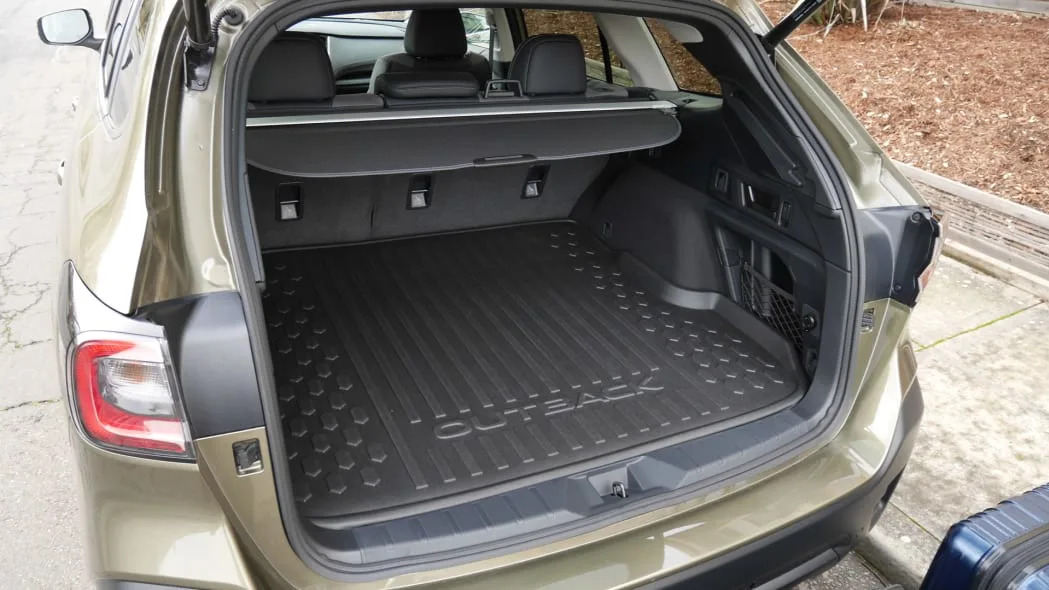
So here is what you're working with. Note that rubber trunk tray and cargo cover are actually standard on all but the base Outback trim level.
As for that cargo cover ...
Upper left: Here it is in place. Duh.
Upper right: Like many other vehicles, especially wagons, there's a channel that runs up the D pillar that lets you quickly raise the cover without fully retracting it.
Bottom left: Here's a better look at that channel.
Bottom right: Because the back seat reclines, you could end up with a gap between seatback and cover. This little filler piece is attached to a tension rod that easily adjusts by hand.




OK, onto the bags. As usual, I'll start by keeping the cargo cover in place. And as always, I use two midsize roller suitcases that would need to be checked in at the airport (26 inches long, 16 wide, 11 deep), two roll-aboard suitcases that just barely fit in the overhead (24L x 15W x 10D), and one smaller roll-aboard that fits easily (23L x 15W x 10D). I also include my wife's fancy overnight bag just to spruce things up a bit (21L x 12W x 12D).

Easy cheese, everything easily fits with the cargo cover still in place. Not surprisingly, the Outback's Legacy sedan sibling managed to also fit all these bags ... and in fact, there was even more space left over since the Legacy's trunk is clearly longer than the Outback's wagon cargo area.
Of course, that changes when you remove the cargo cover and start digging into the garage for extra outdoorsy weekend adventure items.
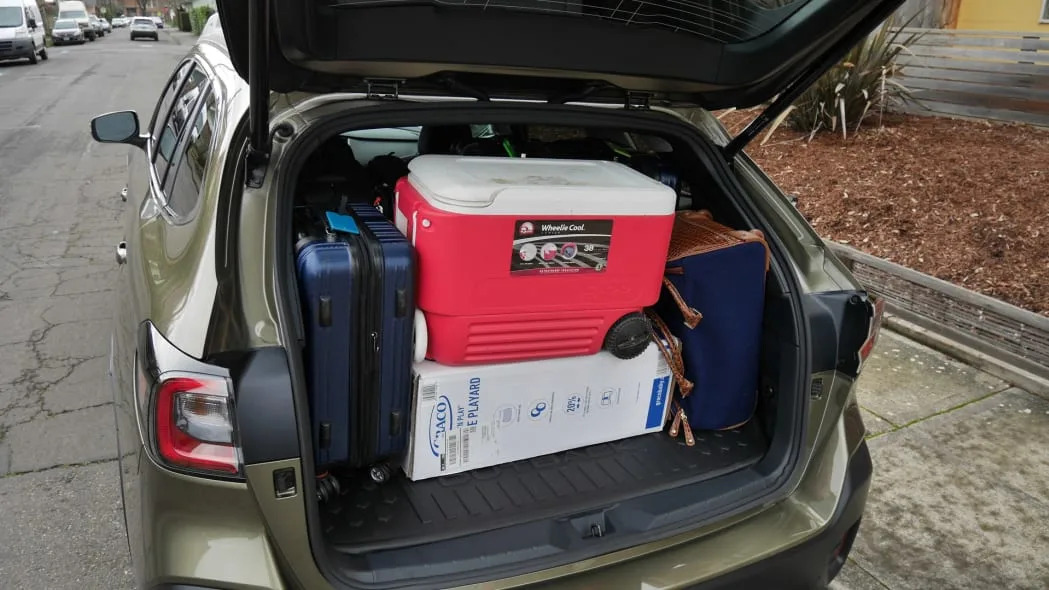
By stacking the suitcases vertically, I was able to make room for a 38-quart cooler and a Graco Pack 'N Play. That's awfully close to what I was able to fit in the Toyota 4Runner last week. There is one key difference, though, besides the missing river raft box ...
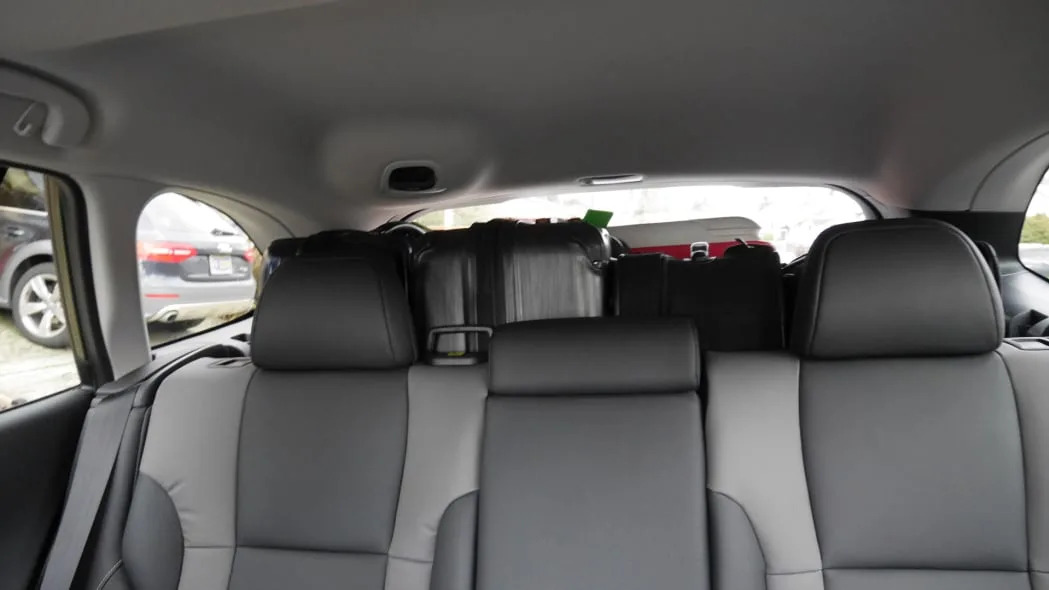
You can't really see anything out the back, which is something I avoid in these tests. What if I maintain visibility?


Well, the two-person inflatable river raft can come along, but you'll be choosing between the cooler or the Pack ' N Play. With the latter, you should be able to fit a soft duffel bag on top.
Either way, this is exceptional. That's a ton of stuff to fit inside a five-passenger vehicle. But let's say you need both the cooler AND the playpen, well, the available luggage-carrying potential doesn't stop there.


The Outback is the only car on the market, including within the Subaru family, that comes with these unique roof rails that swing inward to become their own crossbars. This means you don't have to store crossbars somewhere when not in use or keep them in place to the detriment of noise and fuel economy.
Plus, since the Outback is a wagon and lower than SUVs, it's easier to load stuff onto the roof. It's really not surprising that many of the Outbacks I see around town have something strapped to the roof.
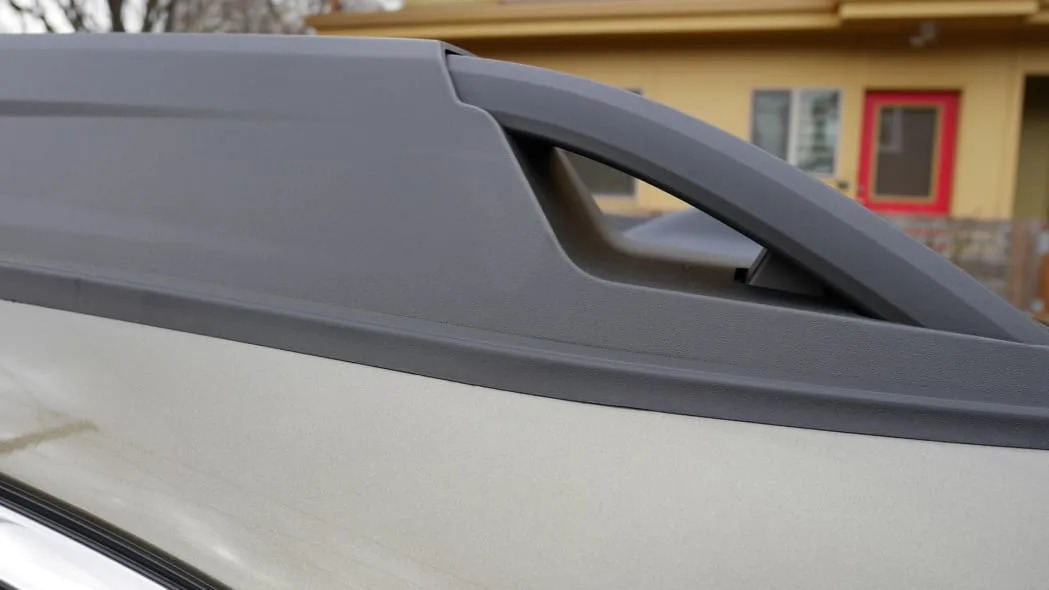
And doing so is made even easier for 2020 as these big, sturdy tie-down points have been added front and back. Attention kayakers and canoeists.
One more note ...
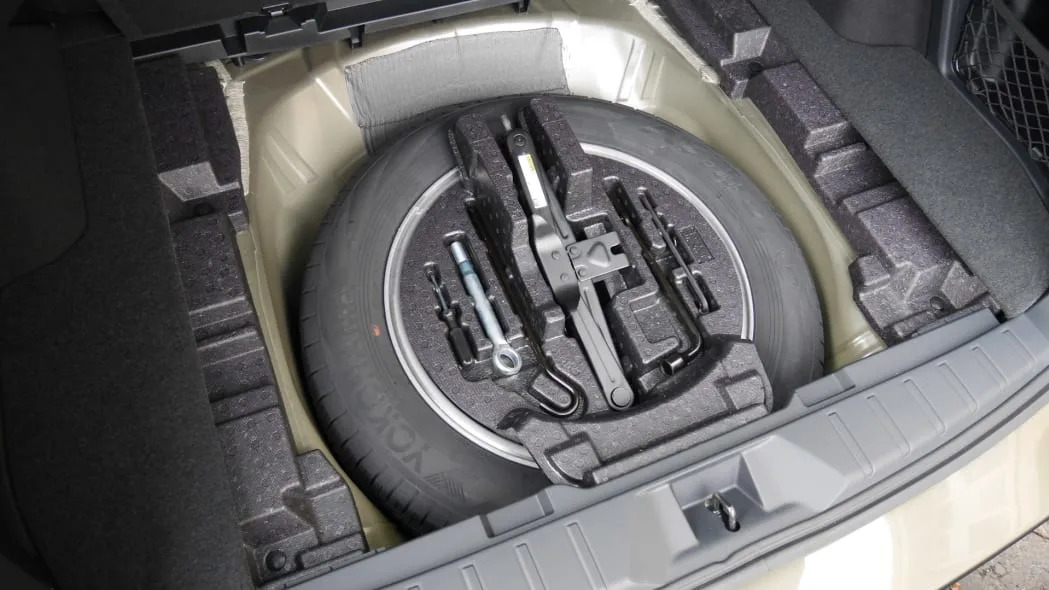
The Outback comes with a full-size spare, which is a rarity these days, and a very good thing to have when driving on unpaved roads and trails.
In total, it turns out that all those Outback buyers around here know what they're doing. If you're looking for something reasonably sized on the outside that can swallow a helluva lot of stuff inside (or on the roof), the Outback is a superior choice.



Sign in to post
Please sign in to leave a comment.
Continue